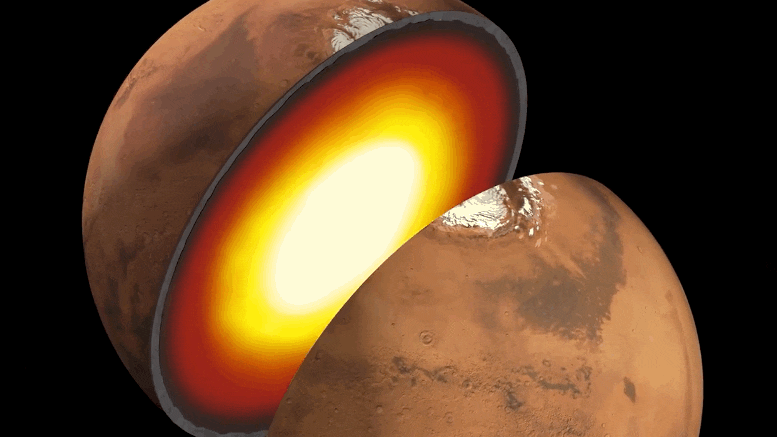It is reported that scientists from the Australian National University (ANU) have made new discoveries on the Mars earthquake by using the SEIS (internal structure earthquake experiment) data of NASA insight They pointed out that volcanic activity under the surface of Mars may be the cause of repeated Mars earthquakes in a specific area of the red planet, which are similar to earthquakes

According to a new study published in nature communications, scientists from the Australian National University and the Chinese Academy of sciences have discovered 47 previously undiscovered Martian earthquakes under the Martian crust. It is reported that this area, known as Cerberus fossae, is a seismically active area on Mars with a history of less than 20million years.
The authors of this study speculate that the magma activity in the Martian mantle, that is, the Martian inner layer sandwiched between the crust and the core, is the cause of these newly discovered Martian earthquakes.
These findings indicate that magma in the Martian mantle is still active, which is contrary to scientists' previous view that these events were caused by Martian tectonic forces.
According to Professor hrvoje tkalcic, a geophysicist and co-author of the paper, from the school of Geosciences, Australian National University, the repetition of these earthquakes and the fact that they were all detected in the same area of the planet show that Mars has more seismicity than scientists previously thought. "We found that these Martian earthquakes occurred repeatedly at all times of the day on Mars, while the Martian earthquakes detected and reported by NASA in the past seemed to occur only in the quiet night on Mars. Therefore, we can assume that the lava movement in the Martian mantle was the trigger of the 47 newly detected Martian earthquakes under the Cerberus fossae region."
Professor tkalcic also pointed out that continuous earthquakes show that rberus fossae is a highly seismically active area. "Knowing that the Martian mantle is still active is crucial for us to understand how Mars evolved into a planet. It can help us answer basic questions about the evolution of the solar system and the Martian core, the mantle and the magnetic field it currently lacks."
It is reported that the researchers used data collected from seismometers on NASA's insight lander. Since its landing on Mars in 2018, the lander has been collecting data on Mars earthquake, Mars Weather and the interior of the planet.
Using a unique algorithm, researchers were able to apply their technology to NASA data to detect 47 previously undiscovered Martian earthquakes.
The study authors point out that although these earthquakes will cause some tremors on Mars, the scale of these earthquake events is relatively small and can hardly be felt if they occur on earth. These earthquakes were detected in about 350 solar days -- a term used to refer to a solar day on Mars -- about 359 days on earth.
According to Professor tkalcic, the discovery of the Mars earthquake can help scientists figure out why the red planet no longer has a magnetic field. "The Mars earthquake indirectly helps us understand whether convection is happening inside Mars, and if this convection is happening -- according to our findings, it seems so -- then there must be another mechanism working to prevent the development of the magnetic field on Mars. Because of the earth's magnetic field and its ability to shield cosmic radiation, all life on the earth is possible, but without the magnetic field, the life root we know This cannot exist. Therefore, understanding the magnetic field of Mars, how it evolved and at what stage in the history of the planet it stopped is obviously very important for future missions. If scientists hope to establish human life on Mars one day, this is very important. "